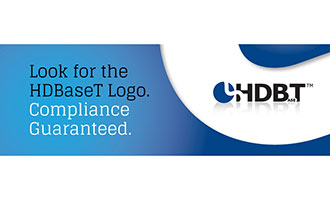Gary’s HDBaseT Petition — A Bridge Too Far?
 AV social media maven and rAVe Pubs founder Gary Kaye is making waves with a recent blog post in which he lambasted the HDBaseT Alliance for its failure to properly monitor and implement the “standard” of HDBaseT. His article is well researched, and makes a number of very valid points. A few weeks prior to Gary’s post, another well-respected AV blogger, Leonard Suskin wrote an article lamenting more or less the same exact issue. Lastly, the Thanksgiving holiday brought with it a chance for the venerable Mark Coxon to throw his hat in the ring with his “Blessings and Turkeys of 2013” post in which he praised HDBaseT as a technology, but relegated the Alliance to cold leftovers.
AV social media maven and rAVe Pubs founder Gary Kaye is making waves with a recent blog post in which he lambasted the HDBaseT Alliance for its failure to properly monitor and implement the “standard” of HDBaseT. His article is well researched, and makes a number of very valid points. A few weeks prior to Gary’s post, another well-respected AV blogger, Leonard Suskin wrote an article lamenting more or less the same exact issue. Lastly, the Thanksgiving holiday brought with it a chance for the venerable Mark Coxon to throw his hat in the ring with his “Blessings and Turkeys of 2013” post in which he praised HDBaseT as a technology, but relegated the Alliance to cold leftovers.
While all three of the aforementioned posts are uniquely nuanced, they share common roots, essentially questioning the HDBaseT Alliance’s validity in calling itself a “standard.” Claiming status as a true “standard” implies that a technology is completely manufacturer-agnostic. But wait you say, HDBaseT is manufacturer-agnostic isn’t it? Well… yes and no. This is systems integration — you didn’t really expect a clear answer did you?
AV integrators have been dealing with pseudo-standards for long enough to have developed a trained eye and a short fuse. Gary in particular, takes issue with the alliance’s choice of the term “5Play.” Specifically he points out the confusion caused by the fact that manufacturers don’t have to implement all five features (audio, video, control, Ethernet and power) in order to claim status as an HDBaseT compliant device. He suggested instead (and even asking his readers to sign a petition) that the Alliance do one of two things:
- Divide the certification into different categories (2Play, 3Play, 4Play, etc.)
OR - Require all manufacturers to implement all five features on all HDBaseT devices
This is where Gary and I part company. Both suggestions are well-intentioned but are flawed in their own ways. The idea of separate 2Play, 3Play, 4Play and 5Play certifications is impractical. I suspect it would just cause greater confusion, consume unnecessary resources at the alliance and would only serve to further muddy the water. What order would you put the features in? What if a manufacturer wanted to implement features 1, 3, and 5, but not 2, and 4? Are they allowed to do that? Is it now a 3Play Device? But wait, did Crestron implement the same features on this 3Play switcher as Atlona did on that 3Play Receiver? Is this 2Play device fully compatible with that 4Play device? Somebody pass me the Tylenol.
Granted, the very problem I’ve just described is the one Gary wants to see solved. We all do. I just think this could be done in less convoluted manner. How about the Alliance simply comes up with a standard matrix symbol indicating which of the 5Play features are implemented? They could then require that all manufacturers display it prominently on their packaging and all specification sheets. This would save us loads of time digging through spec sheets, yet avoid the semantical games that would be sure to follow the formalized division of an already loosely defined standard.
The alternative solution proposed by Gary is to force all manufacturers to implement the full 5Play feature set. Sound good on paper, but in practice, this is very bad idea. The simple fact is that not all five features are needed on every HDBaseT product. A one-size-fits-all policy will drive up costs, therefore slowing down widespread adoption. Add to that the fact that even if two devices (from the same manufacturer or not) are both fully 5Play compliant, they’re still not guaranteed to work together. Just read Leonard’s post, and just as importantly the comments that follow, for proof of that. HDCP issues, EDID issues, variances in control protocols, etc. can all come into play. And these have nothing to do with HDBaseT.
HDBaseT is a promising, if slightly loosely defined, technology. During its adoption phase, there will be growing pains. And as usual, systems integrators will have to shoulder the load. But as the saying goes, “The Only Way Out is Through.” I agree that a strict certification program is needed to ensure that the core functions of products claiming compliance work, and work reliably. By core functionality I’m simply stating that the products do what they claim to do. What functions a manufacturer decides to implement should be 100 percent at their respective discretion. And a degree of care should be taken to avoid bureaucratic games over how things are labeled. While I agree with Gary, Mark and Leonard that the Alliance still has work to do, I think that Gary’s petition is a bridge too far.
What do you think? Let us know in the comments below, we’d love to hear your feedback.
As Always, Happy Integrating,
JG





